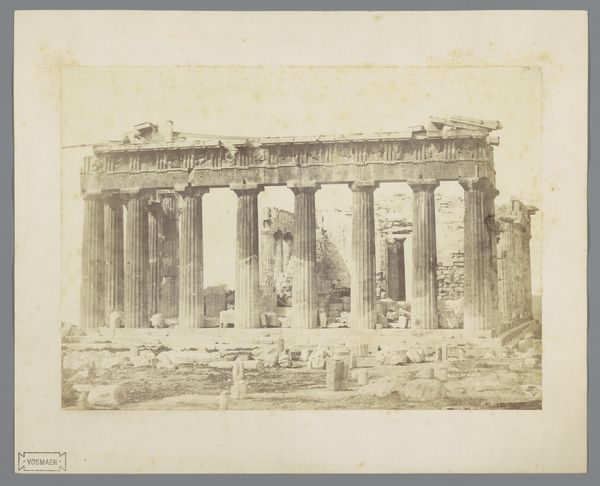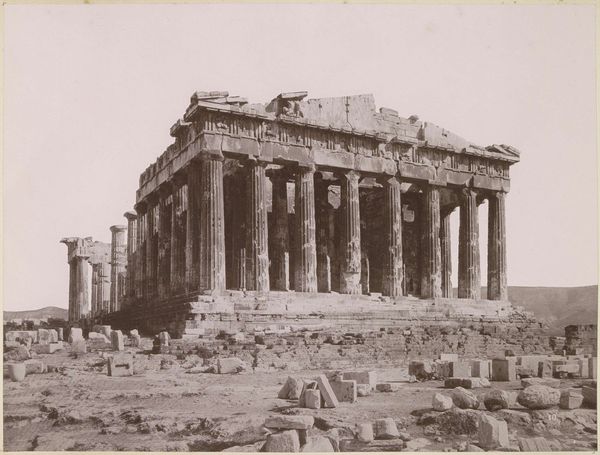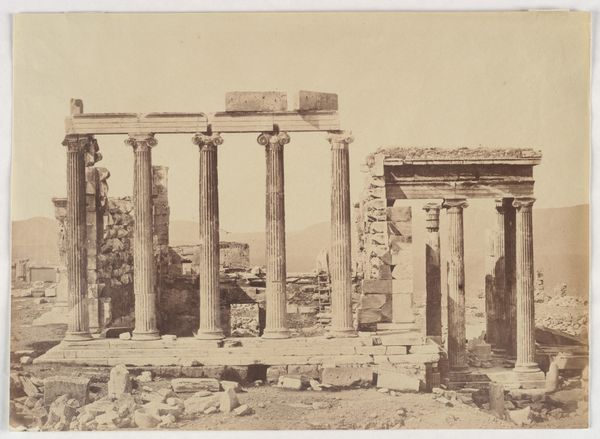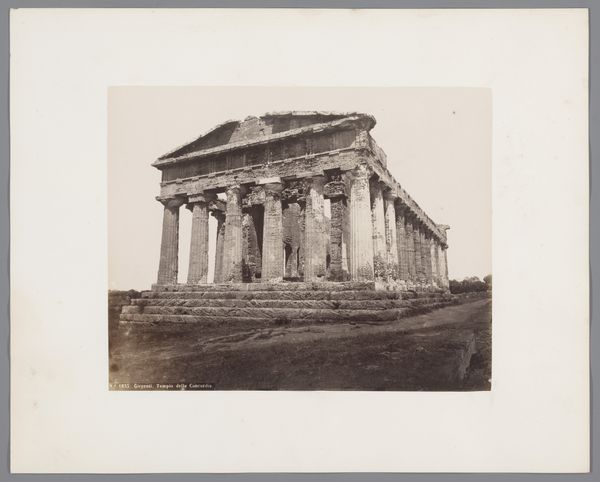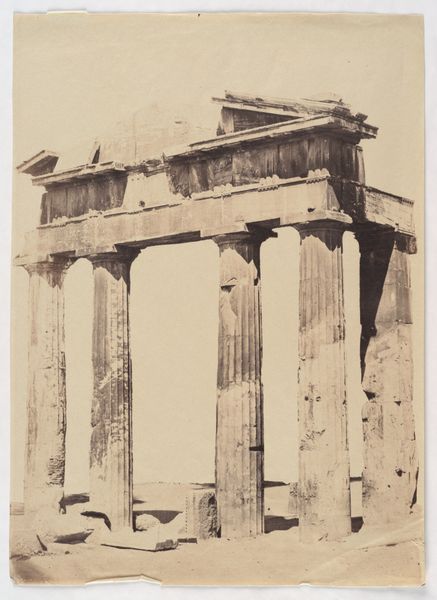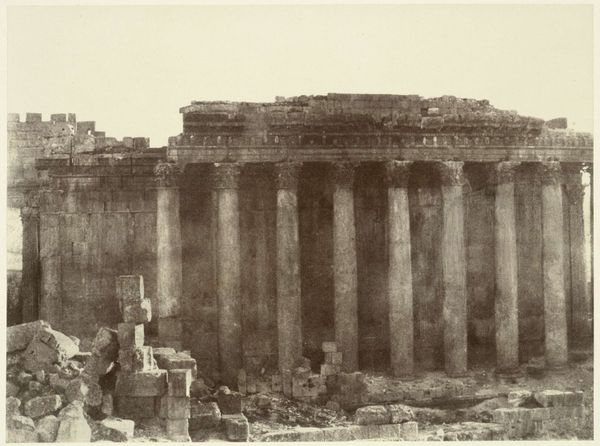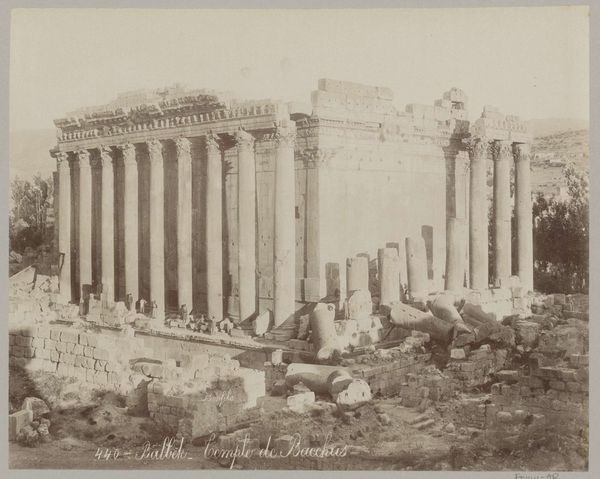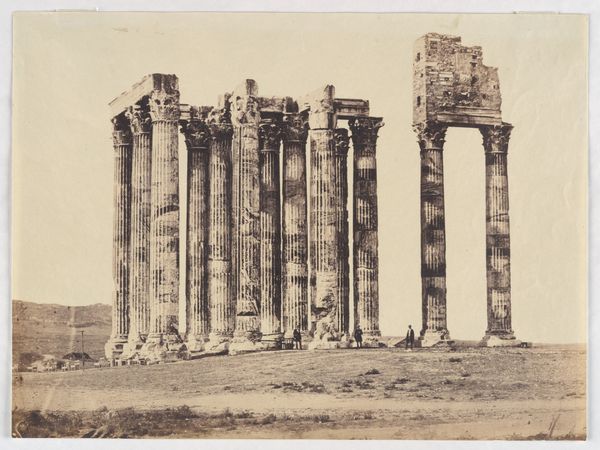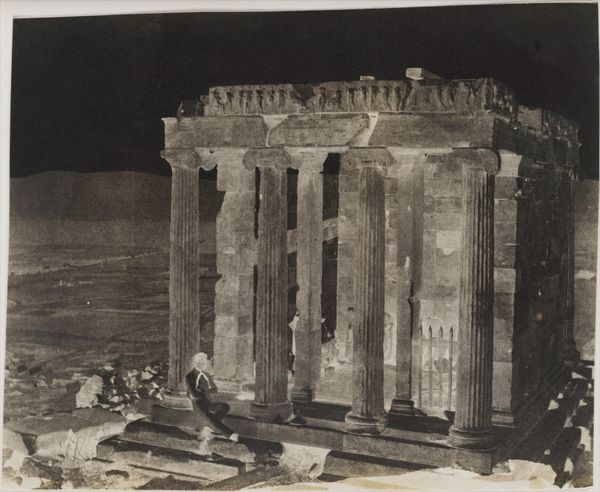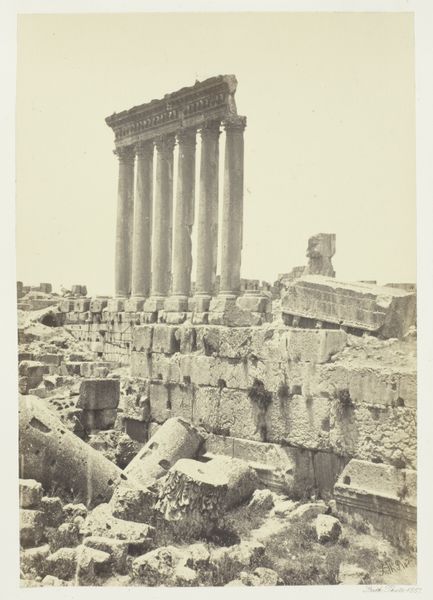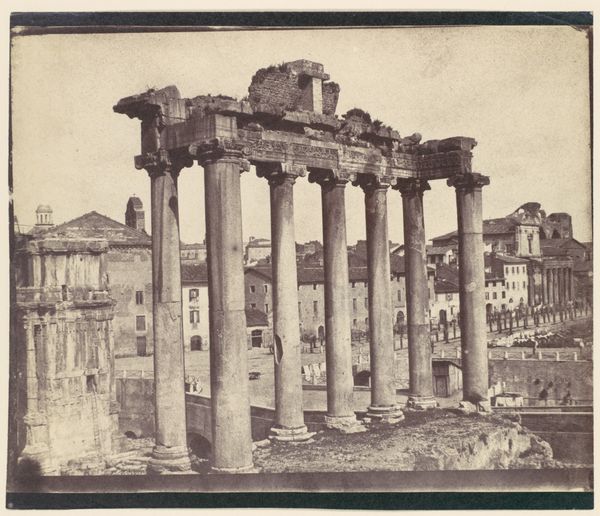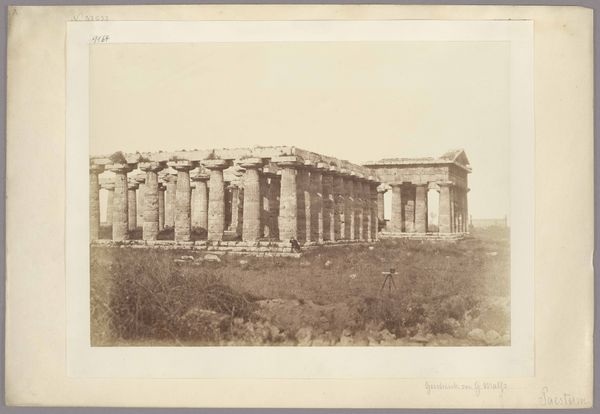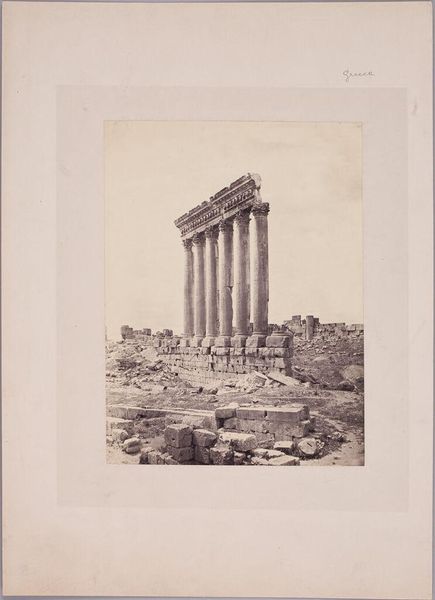![[Acropolis, Athens, Greece] by James Robertson](/_next/image?url=https%3A%2F%2Fd2w8kbdekdi1gv.cloudfront.net%2FeyJidWNrZXQiOiAiYXJ0ZXJhLWltYWdlcy1idWNrZXQiLCAia2V5IjogImFydHdvcmtzL2JkYWU5ODk4LWZkM2MtNDE5NC04NjgwLWRiNWFlYTVkYTIzNC9iZGFlOTg5OC1mZDNjLTQxOTQtODY4MC1kYjVhZWE1ZGEyMzRfZnVsbC5qcGciLCAiZWRpdHMiOiB7InJlc2l6ZSI6IHsid2lkdGgiOiAxOTIwLCAiaGVpZ2h0IjogMTkyMCwgImZpdCI6ICJpbnNpZGUifX19&w=3840&q=75)
photography, albumen-print
#
greek-and-roman-art
#
landscape
#
photography
#
ancient-mediterranean
#
cityscape
#
albumen-print
Dimensions: Approx. 11 x 15
Copyright: Public Domain
Curator: What strikes me first is the solemnity in this image. Editor: Indeed. This is an albumen print of the Acropolis in Athens, Greece, created by James Robertson between 1850 and 1855. What do you make of his particular choice of process and materials? Curator: Well, the albumen print was a popular photographic process at that time, known for its clarity and detail. But here, it gives the stones a textured, almost palpable presence. You can see the wear and tear on the columns. It underscores the material reality and history embedded in these structures, reminding us of the labor, extraction, and skill that went into the monument's creation. Editor: Absolutely. And it's vital to contextualize this image within 19th-century European interests in Greece, particularly how Classical ideals were mobilized to legitimize contemporary political projects. Seeing the Parthenon framed this way allows us to reflect on colonialism, cultural appropriation, and the power dynamics inherent in the act of representing a colonized space. Curator: Do you think this photograph glamorizes colonialism? It's shot simply in the “landscape” style. Editor: No, I wouldn't say it "glamorizes," but it certainly participates in the visual economy of Orientalism. The ruins signify not just a fallen empire, but a kind of Western triumph, or perhaps inheritance. The perspective offered to Western viewers reinforces their position of power relative to this ancient civilization and the modern Greeks inhabiting this landscape. The very act of Robertson, a British photographer, documenting this scene reflects that power imbalance. Curator: The photograph almost transforms these stones into commodities. What can an analysis of materials, technique, and circulation tell us about the relationship between art, commerce, and cultural capital at this time? The photograph itself is now at the Metropolitan Museum of Art, so what is to be said about that trajectory? Editor: Well, its presence here frames the monument as something for global consumption, separated from its original social and political context in Greece, both then and now. Considering the contemporary Greek perspective—their heritage—complicates how we look at photographs like these. Curator: Right. Thanks for sharing this critical angle. I now see the weight of implications more clearly. Editor: Of course. Considering the Parthenon beyond its artistic value allows us to be far more conscious.
Comments
No comments
Be the first to comment and join the conversation on the ultimate creative platform.
